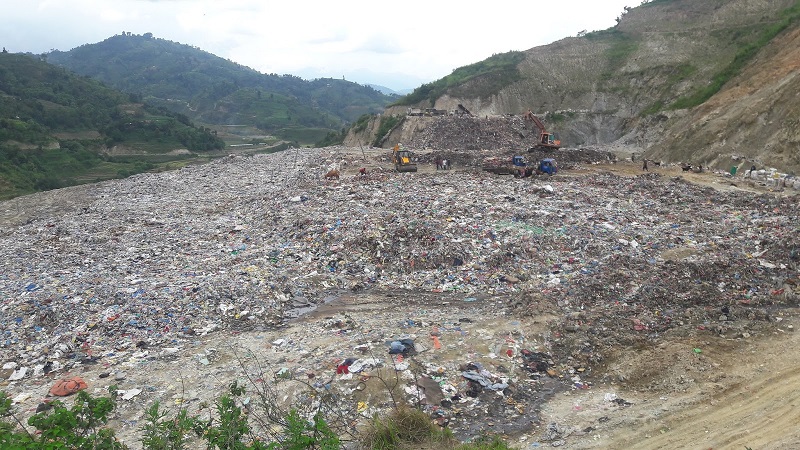No negative impact has been seen in the local people’s health and the environment around Sisdol area, the waste dumping site of Kathmandu Valley, Nepal Academy of Science and Technology (NAST) said. NAST stated this in its report on Environmental Impact Assessment Study and Research of Sisdol Area it released on Monday.
It stated that there was not that serious negative impact in the Sisdol area due to the dumping site. NAST had conducted the study in and around the area for two months since last September. Kathmandu Metropolitan City had commissioned the study. As part of the environmental impact assessment, NAST had studied the flowing water, the ground water level, the odour, gas, dust particles, the waste sludge, materials that can be seen and not be seen with naked eyes, birds, fish and animals, among other things in Sisdol area.
Senior scientist at NAST Dr Bhoj Raj Panta said a study conducted with the help of the olfactometer at his office showed that the gas emitting from the waste at Sisdol does not much impact the locals. “Khilbuche, Tilkoria, Tallo Siudini, Simkhadagaon, Magatetol – one –two, Panchamuritol, Kolpukhola-one-two and Sobati Baluwa are the main affected areas close to the dumping site while Bhandar Thumka, Dhoka Bhanjyang, Patahakgaun, D-gaun, Kshete – A and B, Shivalaya Secondary School Siudini, Tallo Siudini-one-two, Kagatigaun are the locations which are somewhat affected. Similarly, the less affected areas are Kajunje Gaun, Swana Gaun, Healthpost, Kagati Gaun, and Siudini Tyankidanda. But the study shows there is no significant environmental impact from the dumping site,” Panta added.
It is said NAST conducted the olfactometre tests at 24 locations at Sisdol as part of the study. According to Panta, no traces of methane and carbon dioxide gases were found in Sisdol area. Similarly, the NAST study showed that the dust particles in the area were within the permitted standard. NAST has recommended that the dumping site should be managed much more efficiently, the waste should be covered while transporting it from the Valley in trucks to the dumping site, the reusable waste should be segregated, there should not be paucity of human resources and money required for transporting the waste to Sisdol, and the entry of people and dogs to the dumping site should be stopped. It also suggested that the aquatic life and the soil in the area would not be affected if the leachate was tested before dumping it.
Mayor of Dhunibesi municipality Bal Krishna Acharya said kites and vultures have caused menace in Suhana, Chiudeni and nearby areas due to the dumping site. He expressed his ignorance regarding the study conducted by NAST and narrated many adverse impact of the waste dumped at Sisdol like the crops are tall but do not bear ears, death of cattle after drinking water from Sisdol and development of scabies and rashes when people wash their hands and feet with water flowing from that area. He also complained that the number of people suffering from cancer and kidney diseases has been increasing every year. KMC mayor Bidya Sundar Shakya said a special discussion would be held together with the mayors of all municipalities including Dhunibesi and Kakani regarding the issues related to the dumping site.
Sisdol Bancharedando Concern Committee president Bishwas DC protested the report findings that there was no foul odour and there was not significant impact in the water of the area in Kakani-1, saying it was completely untrue. “The reality of the area would have been found if the tests were conducted on an hourly basis,” he demanded. Shree Ram Dhungana, a local from Sisdol said that the environment around Sisdol has been much affected due to the dumping of liquid used for chemotherapy, sulfuric acid, other acid, date-expired medicines, animal carcasses, waste food and industrial waste etc. NAST secretary Mahesh Kumar Adhikari said NAST and KMC would together devise additional plans for mitigating the problems in future.
यो खबर पढेर तपाईलाई कस्तो महसुस भयो ?


















प्रतिक्रिया